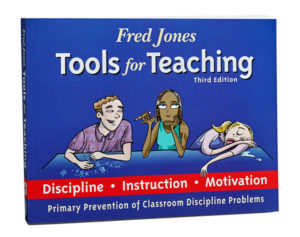Applying Tools for Teaching
 If you’ve been reading the blog, then you know that I’ve been studying this summer and learning about classroom management. I’ve already had opportunities to apply lessons from First Days of School and Tools for Teaching as you may have seen in my First Day of Camp Script
If you’ve been reading the blog, then you know that I’ve been studying this summer and learning about classroom management. I’ve already had opportunities to apply lessons from First Days of School and Tools for Teaching as you may have seen in my First Day of Camp Script
There are many concrete strategies explained and recommended in Tools for Teaching, but I won’t explain them in full here. Instead, you should really go read the book for yourself. They offer the first chapter for free so you can preview it here.
Strategy One
The first of which I feel like I have always used. The author calls this “working the crowd.” It’s the idea of using movement and proximity to manage the classroom. Students are less likely to misbehave if you are nearby. Moving about the room also allows the teacher to check work while the students are doing the work. I’ve used this technique working as an assistant teacher in a preschool, watching students during my college practicum, and now as kids build with Legos. Walking the room like this makes the next strategy easy to implement.
Strategy Two
This strategy is “praise, prompt, leave” for use during guided practice. Since the campers are guided by the picture instructions of the builds, it’s nearly all guided practice. I include just the praising part of this strategy as I walk so that students know I am there checking their work and available to help, but see they are doing well. When I see a mistake, most students get a simple verbal prompt. I say what they need to do and move on. Luckily, there are visuals to point to if a student seems especially confused. I do stop my route and help those with raised hands, but I still try to prompt them on what to do next and leave quickly. This works very well when other teachers are around to help. I find that it’s important to know the builds and the instructions so that I can see mistakes, help students find them, and prompt them on what to do next.
Strategy Three
Again, if you’ve been reading my blog, then you’ve also seen me write about and mention “Say, See, Do Teaching.” This is another wonderful strategy from Dr. Fred Jones. It is one that I have included in my script for the first day of camp and that I will be practicing this week. This style of teaching follows with my goal of modeling for my students. I say it; students see me do it; then they do it themselves. Say, See, Do Teaching also focuses on teaching one step at a time. This avoids forgetfulness, cognitive overload, and the endless questions of “what do I do next?” I’ll let you know soon how applying this strategy goes.
Feedback
What are some teaching strategies that you use or have seen? Do any of these sound familiar? Do you practice any of them? Let me know in the comments below.